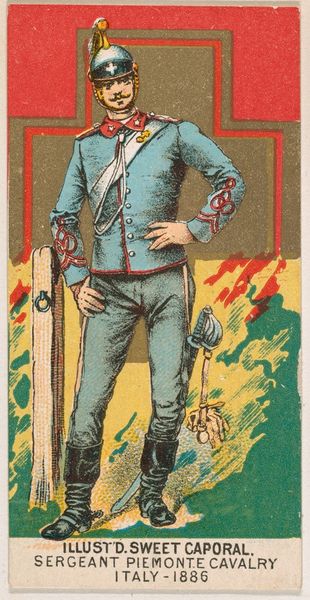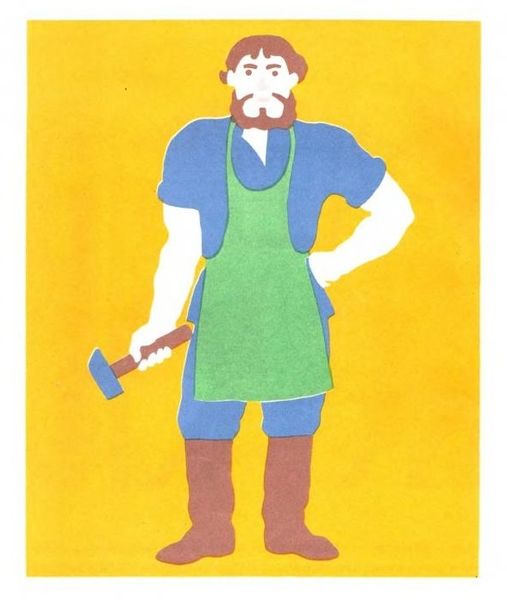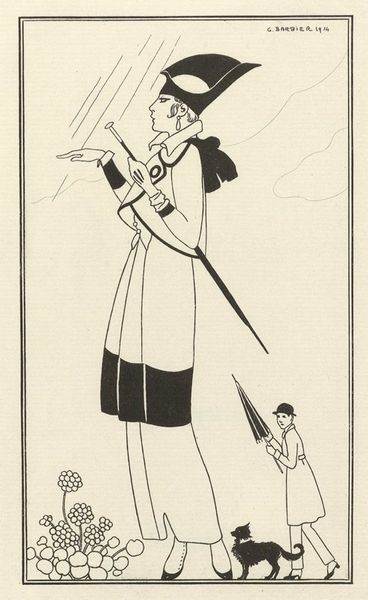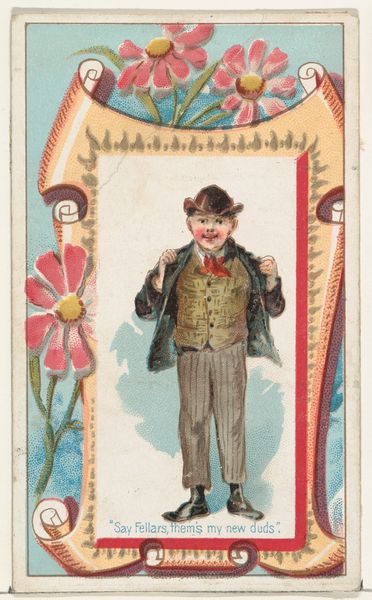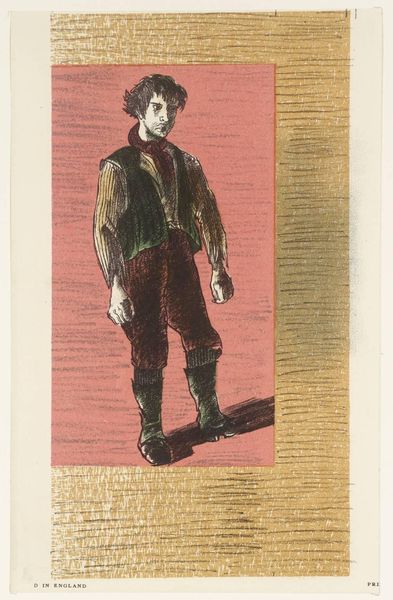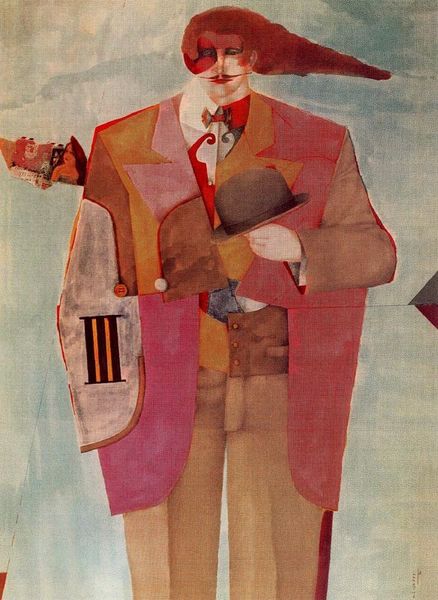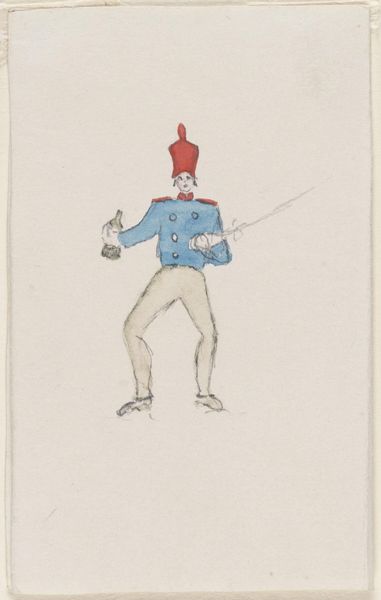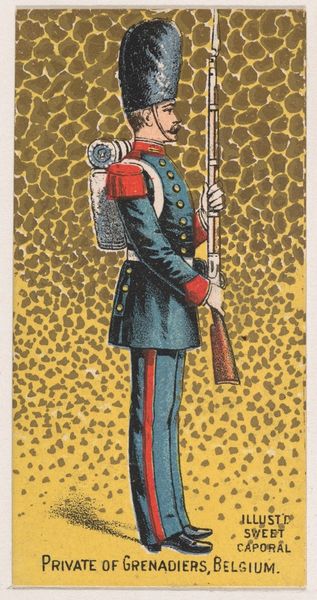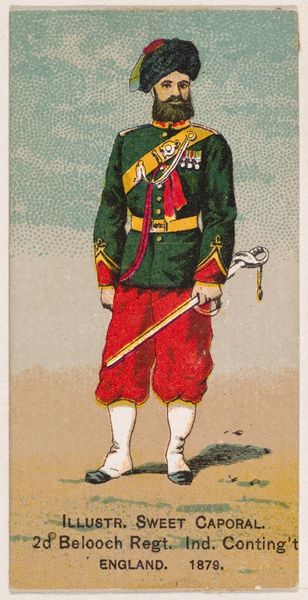
drawing, acrylic-paint, paper
#
portrait
#
drawing
#
childish illustration
#
cartoon like
#
cartoon based
#
narrative-art
#
caricature
#
fictional-character
#
animated character
#
caricature
#
acrylic-paint
#
figuration
#
paper
#
flat colour
#
costume
#
cartoon style
#
cartoon carciture
#
cartoon theme
#
clip art
Copyright: Hryhorii Havrylenko,Fair Use
Curator: This illustration, dating from 1971, is by Hryhorii Havrylenko. It served as an illustration for Daniil Kharms' book "Fairy Tale." It certainly strikes a playful, almost childlike, tone, doesn't it? Editor: Indeed, the figure, adorned in bold, flat colors, stands against a serene blue backdrop. There's a distinct simplicity in its composition; the red hues, along with that rather rudimentary rendering, evokes something akin to early storybook art. Curator: Absolutely. Observe how the artist uses clean lines and a limited palette to define form. The figure's attire, complete with hat, cape and sword, and that even flatter second sword or sceptre held aloft, lends it a cartoon-like character. It's less about realism and more about conveying a narrative archetype. Note, for instance, the conscious lack of detail—see how the minimal rendering simplifies the protagonist into an allegorical hero, reducing him to basic shapes. Editor: Well, given it's an illustration for a "Fairy Tale," I find myself drawn to its construction. This feels like a cut-and-paste technique, likely executed by hand, then printed en masse, affordable materials producing artwork that makes art and literature accessible to the wider culture. It's reminiscent of those early, affordable prints and publications aimed at children, relying on easily sourced paper and pigments, challenging the notion of "fine art" by its very nature. Curator: That’s a valuable point. Yet consider the symbolic dimension. The subject is reduced to mere color, form, and pattern, becoming just a shadow or signifier of an archetypal folk character; and while these artistic choices and limited resources might have come from the circumstances of the period and needs, what they suggest or even represent still seems important here. Editor: Precisely, the artwork, rooted in practicality and production, echoes broader shifts towards accessibility and a rejection of elitist notions within art itself. It’s fascinating how something created with relatively humble materials—probably paint on paper—achieves a kind of quiet rebellion. Curator: So, ultimately we can view this image in at least two parallel but also interlinked ways. One, it operates on a formal level as a figure extracted from a simple narrative of virtue. And two, by examining its material existence and the realities of its production, the artist opens us to an understanding of both high and low culture. Editor: Agreed. It certainly highlights that meaning and interpretation arise as much from materials and production processes as from any intrinsic qualities within the art object.
Comments
No comments
Be the first to comment and join the conversation on the ultimate creative platform.

